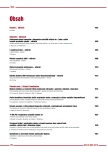Prevalence of C-reactive protein levels in adult population in two regions in the Czech Republic and their relation to body composition
Authors:
J. Čeřovská; P. Hoskovcová; M. Vosátková; H. Zamrazilová; V. Zamrazil
Authors‘ workplace:
Endokrinologický ústav, Praha, ředitel doc. MUDr. Vojtěch Hainer, DrSc.
Published in:
Vnitř Lék 2006; 52(11): 1045-1050
Category:
Original Contributions
Overview
Increased concentration of high sensitivity C-reactive protein (hsCRP) is the new predictor of myocardial infarction, brain strokes, damage peripheral veins and sudden death. The aim of the study was to give an overview of current prevalence of individual risky concentrations of hsCRP in the adult population in two regions in the Czech Republic and to find a relationship to the indicators of fat tissue quantity.
Methods:
test involved a representative sample of 516 adults aged 18 to 65 years (191 men and 322 women), with permanent residence in the Jablonec nad Nisou a Příbram regions. Period of testing: spring of 2004 and 2005. HsCRP was determined using the latex immunoprecipitation method with turbidimetric measurement on Cobas Integra 400 plus analyzer. The risk of cardiovascular disease (CVD) was set according to the scale derived by the American Heart Association. Body fat was measured with TANITA BF 410 MA, Omron and a calliper on 4 places on the body. Waist circumference was measured half-way between the anthropometric landmarks of the iliocristale and the lower angle of the ribs. Body mass index (BMI) was calculated using Quetelet formula: weight/height2. Statistical processing was done with Statgraphics Plus, version 7.1, using categorical data analysis with the χ2 statistic and Spearman’s correlation analysis.
Results:
20.2 % of cases with high CVD risk were identified in the whole sample of adults. Levels of hsCRP exceeding 10 mg/l (infectious disease indicator) at the time of the test were found in 3.9 % cases (5.6 % in the Jablonec region, 2.3 % in the Příbram region). There were no significant regional differences for individual CVD risk categories; however, there was statistically significant difference between the two regions in terms of average hsCRP levels (with higher levels in the Jablonec region). Gender had a statistically significant impact on hsCRP levels: high CVD risk was recorded in 14.8 % men and in 23.3 % women. Levels of CRP indicating inflammatory disease were more frequent in women (4.7 %) than in men (2.6 %). The frequency of risk levels of hsCRP in adults significantly grows with age. Spearman’s correlation analysis showed the closest relationship between hsCRP and body fat weight (rS = 0.5124). A statistically important positive CRP levels relationship was shown both in subcutaneous fat and visceral fat.
Conclusion:
One fifth of the adult population in two regions of the Czech Republic have at the present time levels of hsCRP which indicate a high cardiovascular risk. The risk is higher in women than in men and it doubles starting at 50 years of age and over. Positive correlation between hsCRP levels and body fat indicators was conformed both for visceral and subcutaneous fat.
Key words:
C-reactive protein – body fat – disease prevalency
Sources
1. Durnin JVGA, Rahaman MM. The assessment of amount in the body fat from measurements of skinfold thicknesses. Br J Nutr 1967; 21 : 681–690.
2. Dvořáková A, Poledne R. Ultrasenzitivně měřený C-reaktivní protein – nový parametr kardiovaskulárního rizika. Vnitř Lék 2004; 50 : 852–857.
3. Koenig W, Sund M, Frohlich M et al. C-reactive protein, a sensitive marker of inflammation, predicts future risk of coronary heart disease in initially healthy middle-aged men – results from the MONICA Augsburg, cohort study, 1984 to 1992. Circulation 1999; 99 : 237–242.
4. Masopust J. Požadování a hodnocení biochemických vyšetření. II. část. Zdravotnické aktuality 217, Avicenum – Zdravotnické nakladatelství Praha, 1990, 141–148.
5. Maruna P. Proteiny akutní fáze. Fyziologie. Diagnostika. Klinika. Praha: Maxdorf 2005, 13–53.
6. Pearson TA, Mensah GA, Alexander RW et al. Markers of inflammation and cardiovascular disease: application to clinical and public health practice: A statement for health care professionals from the Centers for Disease Control and Prevention and the American Heart Association. Circulation 2003; 107 : 499–511.
7. Ridker PM. Clinical Application of CReactive Protein for Cardiovaskular Disease Detection and Prevention. Circulation 2003; 107 : 363–369.
Labels
Diabetology Endocrinology Internal medicineArticle was published in
Internal Medicine

2006 Issue 11
Most read in this issue
- Male hormonal contraception
- Transfusion-induced immunomodulation and infectious complications
- Mitral regurgitation: are we able to properly time the surgical procedure?
- Massive pulmonary embolism – attempt at embolectomy following the failure of thrombolytic treatment
